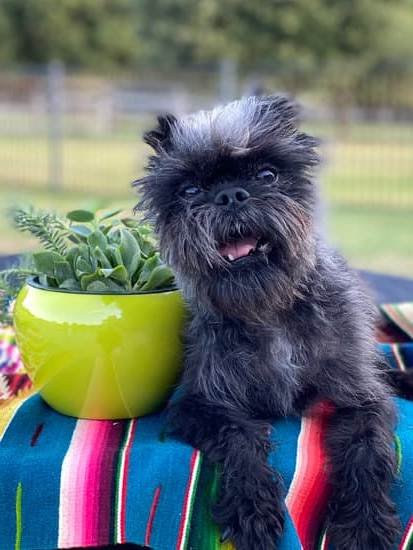Is your dog showing signs of anxiety? Understanding and addressing this issue is crucial for the well-being of your furry friend. In this article, we will explore the topic of anxiety dog training and provide valuable insights into managing and alleviating anxiety in dogs.
Anxiety in dogs can manifest in various ways, from excessive barking and destructive behavior to withdrawal and restlessness. Recognizing these signs and symptoms is the first step in addressing the issue. By understanding what triggers anxiety in dogs, pet owners can take proactive steps to help their canine companions overcome their fears and worries.
Proper training plays a crucial role in managing dog anxiety. Through the use of effective training methods, pet owners can provide their anxious dogs with the tools they need to cope with stressful situations. From positive reinforcement techniques to desensitization and counterconditioning, there are various approaches that can help alleviate anxiety in dogs.
The Importance of Proper Training
Proper training is crucial in managing dog anxiety for several reasons. First and foremost, trained dogs are generally more confident and well-adjusted, which can help alleviate the symptoms of anxiety. Additionally, training provides mental stimulation and helps establish a predictable routine for the dog, both of which can be beneficial in reducing anxiety levels.
Training also allows pet owners to establish clear boundaries and expectations for their dogs, which can be comforting for anxious dogs. When a dog understands what is expected of them and what behaviors are appropriate, they may feel less stressed and anxious in uncertain situations.
Moreover, incorporating obedience training into an anxiety dog training program can give the owner greater control over their pet’s behavior, especially during times when their anxiety may be triggered. This can provide a sense of security for both the dog and the owner, ultimately contributing to a healthier relationship between them.
| Importance of Proper Training | Dog Anxiety Management Benefits |
|---|---|
| Increased confidence and well-adjustment | Alleviates anxiety symptoms |
| Mental stimulation and routine | Reduces anxiety levels |
| Establishes boundaries and expectations | Comforting for anxious dogs |
| Greater control over behavior | Sense of security for owner and pet |
Choosing the Right Training Method
When it comes to addressing anxiety in dogs, the right training method is crucial in helping them overcome their fears and worries. There are several different approaches to dog training, and each can have varying degrees of effectiveness in managing anxiety. Here are some popular training methods and their effectiveness in addressing anxiety in dogs:
- Positive Reinforcement Training: This method focuses on rewarding good behavior with treats, praise, or toys. It has been proven to be highly effective in reducing anxiety in dogs by building their confidence and trust. By using positive reinforcement techniques, anxious dogs can learn to associate certain situations or triggers with positive experiences, ultimately reducing their anxiety levels.
- Clicker Training: Clicker training is a form of positive reinforcement that uses a clicker device to mark desired behaviors. This method can be particularly effective in addressing anxiety as it allows for clear communication between the trainer and the dog. The consistent use of a clicker helps anxious dogs understand what is expected of them and can help build their confidence over time.
- Counterconditioning: This involves changing a dog’s response to a specific stimulus by associating it with something positive. For example, if a dog is scared of loud noises, counterconditioning would involve pairing the noise with something enjoyable like treats or playtime. Over time, this can help reduce the dog’s anxiety response to the trigger.
It’s important to note that every dog is unique, so what works for one may not work for another when it comes to anxiety dog training. It’s essential to assess your dog’s specific needs and behavior patterns before choosing a training method. Working with a professional trainer or behaviorist can also provide valuable insights into which approach may be most effective for your anxious dog.
Creating a Safe Space
Creating a safe and secure environment is crucial when it comes to helping an anxious dog feel more at ease. A safe space can provide comfort and stability, which are essential for managing anxiety in dogs. When establishing a safe space for your anxious dog, consider the following tips:
First, it’s important to designate a specific area in your home where your dog can retreat when feeling anxious. This area should be quiet, secluded, and away from high-traffic areas to minimize stress triggers. Consider using a crate or a cozy bed as their safe space, and make sure it is equipped with familiar items such as toys, blankets, and bedding.
Additionally, creating a predictable routine can help alleviate anxiety in dogs. Consistent feeding times, potty breaks, and exercise schedules can provide structure and stability, reducing feelings of uncertainty and unease. Dogs thrive on routine, and having a predictable daily schedule can significantly impact their overall well-being.
Lastly, consider incorporating calming elements into your dog’s safe space. This could include pheromone diffusers, soothing music or white noise machines, or even herbal supplements designed to promote relaxation in pets. These tools can complement training efforts and contribute to creating a calming environment for your anxious dog.
| Tips | Benefits |
|---|---|
| Designate a specific area for the dog’s safe space | Provides a quiet and secure retreat |
| Establish a predictable daily routine | Offers structure and stability for the dog |
| Incorporate calming elements in the safe space | Promotes relaxation and comfort for the anxious dog |
Positive Reinforcement Techniques
Understanding Positive Reinforcement
Positive reinforcement is a powerful training tool that involves rewarding desired behavior to increase the likelihood of it being repeated in the future. This approach focuses on providing dogs with rewards such as treats, toys, or verbal praise when they exhibit the desired behavior. This creates a positive association with the behavior and motivates the dog to continue performing it.
Benefits of Positive Reinforcement for Anxious Dogs
For anxious dogs, positive reinforcement techniques can be particularly effective in building their confidence and reducing their anxiety. By using rewards to encourage calm and relaxed behavior, anxious dogs can learn to associate positive emotions with certain situations or stimuli that may have previously triggered their anxiety. This approach can help them feel more secure and comfortable in their environment.
Implementing Positive Reinforcement in Anxiety Dog Training
When using positive reinforcement to train an anxious dog, it’s essential to identify specific behaviors or responses you want to reinforce. For example, if your dog becomes anxious during thunderstorms, you can use treats and praise to reward them for staying calm during a storm. Consistency is key when implementing positive reinforcement techniques, as it helps anxious dogs understand what is expected of them and reinforces their progress over time.
By incorporating positive reinforcement into anxiety dog training, owners can play a key role in helping their furry companions manage their anxiety more effectively. This approach not only strengthens the bond between dogs and their owners but also empowers anxious dogs to overcome their fears and lead happier, more fulfilling lives.
Desensitization and Counterconditioning
Anxiety in dogs can manifest in various ways, from excessive barking and whining to destructive behavior and withdrawal. Understanding the signs and symptoms of anxiety is crucial in addressing the issue. Some signs of anxiety in dogs include trembling, panting, pacing, restlessness, and avoidance behaviors. It’s important for pet owners to recognize these signs and take proactive steps to address their dog’s anxiety.
One effective way to help dogs overcome their anxiety triggers is through desensitization and counterconditioning. These methods involve gradually exposing the dog to their triggers in a controlled and positive manner. Desensitization aims to reduce the dog’s sensitivity to the trigger, while counterconditioning focuses on changing the dog’s emotional response towards the trigger from negative to positive.
Ways to Implement Desensitization and Counterconditioning:
- Identify the Trigger: The first step is to identify what triggers your dog’s anxiety. Whether it’s separation anxiety, fear of loud noises, or social anxiety, pinpointing the trigger is essential.
- Create a Hierarchy: Once you’ve identified the trigger, create a hierarchy of exposure levels. For example, if your dog is triggered by loud noises, start with recordings of quiet noises and gradually increase the volume over time.
- Use Positive Reinforcement: Whenever your dog shows signs of relaxation or calmness during exposure to the trigger, use positive reinforcement such as treats or affection to reinforce that behavior.
- Stay Consistent: Consistency is key when implementing desensitization and counterconditioning. Gradual exposure combined with positive reinforcement should be done consistently over time for best results.
By understanding and implementing desensitization and counterconditioning techniques into their training regimen, pet owners can help their anxious dogs overcome their triggers in a positive and effective manner. Seeking professional help from a certified trainer or behaviorist can also provide valuable guidance in utilizing these methods for optimal results.
Seeking Professional Help
When it comes to addressing anxiety in dogs, seeking professional help from a trained and experienced dog trainer or behaviorist can make a significant difference in the success of your efforts. Professional trainers and behaviorists have the knowledge and expertise to identify the underlying causes of your dog’s anxiety and develop a customized training plan to address these issues effectively.
Specialized Expertise
One of the key benefits of working with a professional trainer or behaviorist is their specialized expertise in handling anxiety-related behaviors in dogs. These professionals have extensive experience working with anxious dogs and understanding the root causes of their distress. They can provide valuable insights into your dog’s behavior, recognize signs of anxiety that may not be obvious to you, and offer effective strategies for managing and reducing your dog’s anxiety.
Customized Training Plans
Professional trainers and behaviorists can create customized training plans tailored to your dog’s specific needs and triggers. Rather than relying on generic training methods, these experts can assess your dog’s individual temperament, history, and anxiety triggers to develop a personalized approach that addresses their unique anxieties. This personalized approach can lead to more effective results in managing your dog’s anxiety-related behaviors.
Ongoing Support and Guidance
Working with a professional trainer or behaviorist also provides ongoing support and guidance throughout the training process. These professionals can offer valuable advice, tips, and techniques for implementing training strategies at home, as well as making adjustments based on your dog’s progress. Their support can help you navigate the challenges of anxiety dog training more effectively and ensure that you are consistently applying the right methods to help your dog overcome their anxiety.
Patience and Consistency
In conclusion, addressing anxiety in dogs through proper training is crucial for their overall well-being and quality of life. Understanding the signs and symptoms of anxiety in dogs is the first step in recognizing when a furry friend may be struggling. Once anxiety is identified, choosing the right training method becomes essential. Positive reinforcement techniques, desensitization, and counterconditioning are all effective approaches to help anxious dogs overcome their triggers and build confidence.
Creating a safe space for an anxious dog is also important in providing a comfortable and secure environment for them to relax and feel at ease. This can include establishing a designated area where they can retreat to when feeling overwhelmed and providing them with comforting items such as blankets or toys.
Seeking professional help from a trainer or behaviorist who specializes in anxiety dog training can provide valuable guidance and support in developing an effective training plan tailored to the individual needs of the dog.
Ultimately, patience and consistency are key factors in successfully training an anxious dog. It’s important for dog owners to remain patient throughout the process, understanding that it may take time for progress to be seen.
Consistency in implementing training methods, creating routines, and offering reassurance will help anxious dogs feel secure and understand what is expected of them. By incorporating these strategies into their approach, dog owners can make a positive impact on their pet’s well-being and help them lead happier, more confident lives.
Frequently Asked Questions
Can You Train Anxiety Out of a Dog?
It is possible to train anxiety out of a dog using positive reinforcement techniques and desensitization. With patience and consistency, dogs can learn to cope with their anxiety triggers and exhibit calmer behavior.
Can Dogs Be Trained to Help With Anxiety?
Dogs can indeed be trained to help with anxiety, whether it’s through emotional support, providing a sense of security, or performing specific tasks, such as retrieving medication or alerting to panic attacks. This kind of training often involves bonding exercises and obedience training.
Can Dogs Overcome Anxiety?
While some dogs may overcome their anxiety with proper training and support, others may always struggle with it to some extent due to genetics or past experiences. However, with the right approach, many dogs can learn to manage their anxiety and live happy, fulfilling lives.

Welcome to the blog! I am a professional dog trainer and have been working with dogs for many years. In this blog, I will be discussing various topics related to dog training, including tips, tricks, and advice. I hope you find this information helpful and informative. Thanks for reading!





